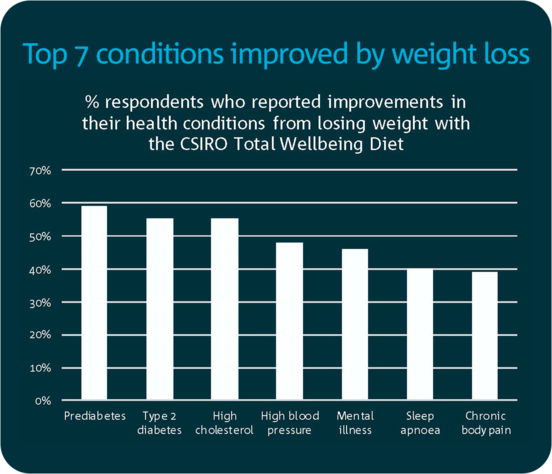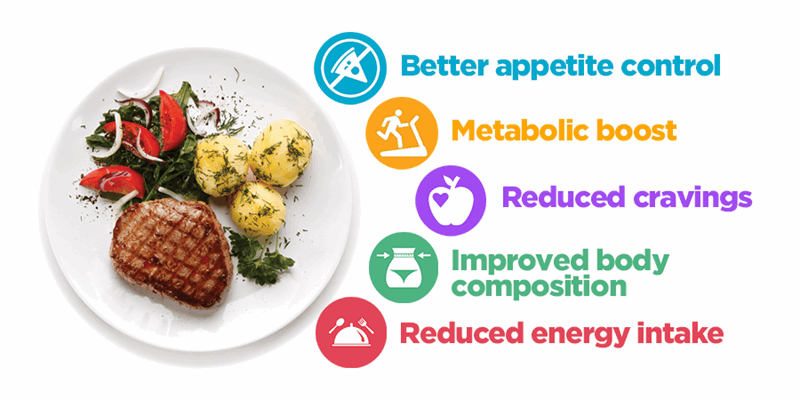Obesity is a big health problem both for individuals and for society as a whole. In fact, Australians are gaining weight faster than the rest of the world. So why are Aussies struggling so much?
In short, because losing weight can be hard. It sounds so simple: eat less and move more. But in reality, it’s far more complicated than that. This comprehensive guide will help show you the best methods on how to lose weight and keep it off!
What you'll learn in this guide:
- The benefits of weight loss
- How to start losing weight
- What to eat for weight loss
- What doesn't work
- How to approach weight loss when you have a lot to lose
- What to do if you struggle to lose weight
- Motivation strategies to keep you on track
- How one-on-one sessions with a Health Coach can help you
- 5 practical weight loss tips you can implement today
How to start losing weight
The most important part of starting a weight loss plan is to simply just start. Right now is as good a time as any. It's easy to put it off because life is busy at the moment, but if you think about it, when isn't life busy?
Research shows that CSIRO Total Wellbeing Diet members who got off to a stronger start at the beginning of their weight loss program lost more weight than slow starters by the end of the program.
Establish a weight loss mindset
Getting mentally prepared for weight loss is just as important as getting your kitchen prepared. Starting with the right mindset can help to increase your chances of success. By preparing for a marathon, not a sprint and recognising that your weight loss journey won’t always be smooth sailing, you’ll be ready for the obstacles that may appear and be more likely to overcome them.
Take the CSIRO Diet Types quiz. It can help you to identify your diet personality, along with your strengths and weaknesses, so you can strategise for success.
Remove temptations
When first learning how to lose weight an important step is to remove temptations in the house. This makes it more difficult to snack on unhealthy or high sugar and high Kj foods that can actively work against weight loss. Healthy alternatives such as fruits, vegetables, or yoghurt to snack on throughout the day can help curb food cravings in a healthier way
Establish clear motivation
The desire to lose weight can be a result of extrinsic motivation, or external factors, or intrinsic motivation, or internal factors. Extrinsic motivation typically is focused on a specific outcome and the reward comes from outside sources such as validation from others or avoiding consequences. Conversely, intrinsic motivation centers around the process and the self. Its rewards are found by satisfying the basic needs of capability and autonomy. Research has found that most often intrinsic motivation is more successful when it comes to achieving goals including weight loss. Determining your reason to lose weight can help set you up for success early on by providing the right type of motivation.
Track food
When discussing weight loss food tracking is an important habit that allows you to keep a close eye on your weight loss progress by identifying both strengths and weaknesses in your daily eating habits. A food log serves as a constant reminder of your daily Kj intake and the types of nutrition that your body is receiving. Food tracking is an easy way to understand your current eating habits. It allows you to spot patterns that are preventing you from losing weight, for example, are you skipping meals which is resulting in too many processed snacks later in the day? Are a few too many indulgences sneaking in throughout the week?
Set specific goals
Setting goals is one of the most important ways to trigger new behaviours or habits while also providing a level of focus in what you are trying to achieve. Setting a specific goal for your weight loss will let you plan out specific steps necessary to lose weight. Most importantly, a goal allows you to focus on creating long term habits that will allow you maintain healthy results.
Identify good and bad habits
Identifying both positive and negative habits can help to sustain long term change. Positive habits may include drinking water instead of a sugary drink or noticing when a food craving comes about due to boredom or stress. Identifying negative habits, such as giving in to food cravings, are also important to notice in order to prevent reinforcing negative behaviour.
If you need some inspiration from successful CSIRO Total Wellbeing Diet members, their top weight loss tips include:
- Take it one day at a time.
- Make exercise a non-negotiable appointment.
- Cook ahead for busy days.
- Exercise in the morning when nothing else can get in the way.
Best foods for weight loss
Finding an eating plan that you enjoy and you'll be able to stick to is key to sustainable weight loss. When discussing how to lose weight you must understand that following strict diet rules that recommend avoiding a long list of banned foods will only leave you feeling deprived, deflated and hungry. And while reducing kilojoules (or calories) is pivotal to weight loss, counting them every day can get tedious. Kilojoule counting also doesn’t take into consideration the quality of your food choices. For example, you could eat chocolate all day until you reach your targeted number of kilojoules for weight loss, but even chocoholics would agree this isn’t the healthiest approach!
The CSIRO Total Wellbeing Diet is a higher protein, low GI eating plan that helps you get the right balance of foods in the right amounts each day. While many other weight loss programs rely on kilojoule counting to help you eat less, the CSIRO Total Wellbeing Diet uses a special food groups system to help you get optimal nutrition from delicious whole foods. Research shows that a combination of low GI and higher protein meals is the best way to reduce both body weight and feelings of hunger when on a diet. The CSIRO Total Wellbeing Diet also distributes protein evenly across all meals for an even greater reduction in hunger.
Low GI foods are carbohydrate-containing foods that take longer to digest. This slow digestion means you feel fuller for longer.
Low GI foods for healthy weight loss
Examples of low GI foods include:
- dense grainy breads
- oats
- beans
- basmati rice
- yoghurt.
Examples of protein-rich foods include:
- beef
- chicken
- eggs
- tofu
By combining low GI foods with lean protein-rich foods you’ll feel fuller for longer. Without this hunger-busting combo, chances are you’ll end up hungry again soon after you’ve eaten.
What are the benefits of weight loss?
What are the benefits of weight loss?
Losing weight isn't about becoming as thin as a stick insect, it's about finding a healthy weight that you're happy with that enables you to live the life you want to live. For some that means simply being able to be more active. For others it means reducing the risk of obesity-related illness in the future.
The great news is that weight loss comes with many benefits beyond the number on the scales. Typical health benefits of losing weight include:
- Better sleep
- Improved mood
- Decreased food cravings
- Reduced risk of diseases like type 2 diabetes, heart disease, osteoarthritis and certain cancers
- Increased sex drive and fertility.
According to studies, almost 60% of respondents reported improvements to their prediabetes as a result of following the CSIRO Total Wellbeing Diet while about 55% reported improvements to type 2 diabetes as well as high cholesterol. Other conditions including sleep apnea, mental illness, high blood pressure, and chronic body pain have also improved as a result of weight loss.
Start Losing Weight Today
